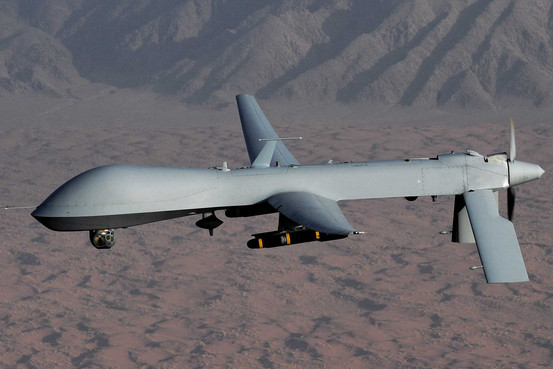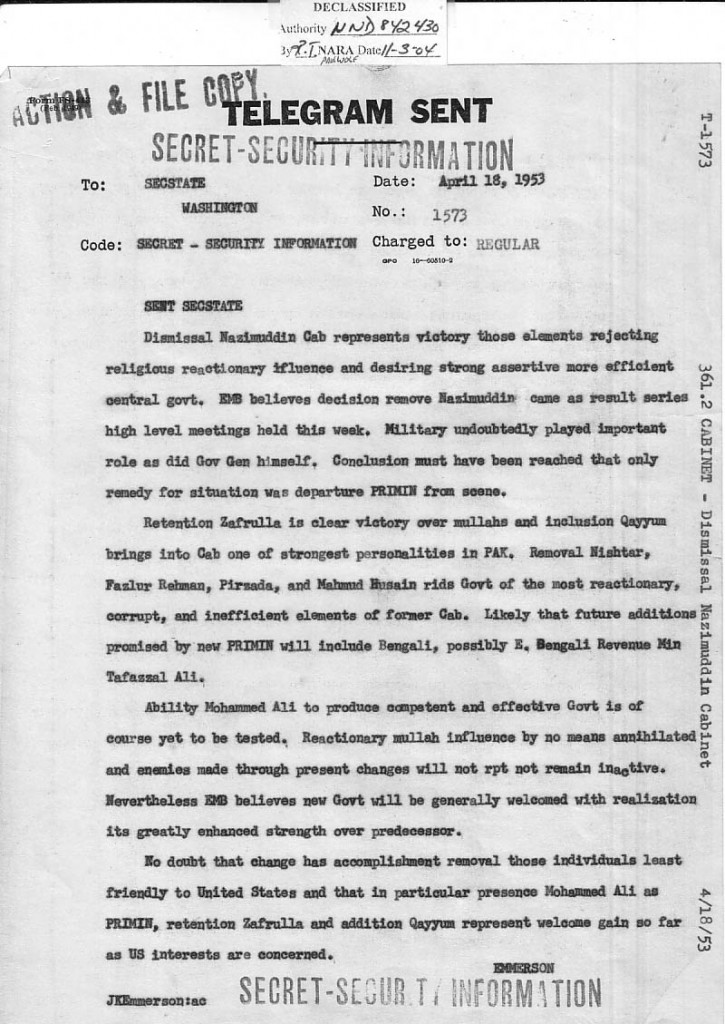I am Pakistani and I am Just Like You !!!
Tag Archive | "America"

Tags: America, India, Muslim, Pakistani, Young, Youth
I am Pakistani and I am Just Like You
Posted on 02 January 2011 by PakBee - Total hits: 19,467

Tags: Aafia Siddiqui, America, USA
Returning to Aafia
Posted on 04 March 2010 by PakBee - Total hits: 3,744
Of all the stories about alleged Al Qaeda members, perhaps none has been more peculiar than that of Aafia Siddiqui. Due to its peculiar nature, I would like to go back to where it all began.
Here’s a summary of incidents as they were reported in chronological order, for better understanding:
The US-educated Pakistani neuroscientist first appeared on the news radar in March 2003. According to her family, Aafia left her home on March 30 with her three children in a Metro-Cab to catch a flight to Rawalpindi. She then disappeared, and her family alleges that she was kidnapped by Pakistani agencies and subsequently handed over to American agencies.
Despite the Siddiqui family’s accusations, the FBI continued to deny reports of Aafia’s abduction. Meanwhile, a story in Newsweek described Aafia as “reportedly arrested.” By this time, Aafia had been linked with Khalid Sheikh Muhammad, the alleged mastermind of the 9/11 attacks.
Aafia’s family continued to demand attention to her disappearance, For instance, a letter from her uncle published in Dawn in March 2004 provides a chronology of Aafia’s disappearance. Another letter, published in May 2004, states that Aafia’s mother and sister have been put under house arrest and are not being allowed to contact anyone – the arrest was seen as retaliation for the previous letter.
In May 2004, the Interior Minister confirmed speculations regarding Aafia by confirming that she was arrested from Karachi and handed over to the US authorities for allegedly being involved in terrorist activities.
Meanwhile, more information was gathered about these alleged terrorist activities. Reports surfaced that Aafia and her husband purchased night-vision goggles and body armour from an online military store; that she opened a post office box for Majid Khan, a Pakistani who was held at Guantanamo on suspicion that he planned attacks on American gas stations; and, most importantly, that she traveled to Monrovia to buy diamonds which were then used to fund Al Qaeda operations. The authorities were unable to provide evidence for these allegations, which is why Aafia has not faced terror charges.
For the next two years, Aafia’s case remained shrouded in mystery until her name appeared in Amnesty International’s list of disappeared suspects in the war on terror. More reports poured in suggesting she was detained in a secret US prison. However, it wasn’t until August 2008 that Aafia’s case was brought to the forefront. A crackdown on the media by General Pervez Musharraf’s government caused journalists to take up Aafia’s case as part of a campaign exposing the general’s heinous crimes.
During a press conference in that context, organised by the Pakistan Tehrik-i-Insaf, British journalist Yvonne Ridley claimed that an anonymous woman being tortured at the Bagram Airbase, a US facility in Afghanistan, and sometimes referred to as “Prisoner 650” may be Aafia. Ridley claimed that she was told that a female prisoner had been held for years and, after sexual abuse and confinement, had deteriorated physically and mentally. Ridley’s speculation that the woman could be Aafia stirred the issue in the media.
That day marked the beginning of the campaign vowing to bring justice to Aafia. She was portrayed as ‘Pakistan’s daughter’ who had been sold to the US for money. As the issue of the missing people of Pakistan reached a turning point, Aafia came to symbolise the atrocities linked to the US-led the war on terror, and her case exposed the collaboration between Pakistani and US authorities. Aafia also attracted international attention as the first woman to be sought by the FBI in connection with its pursuit of Al Qaeda. Last week, she was found guilty on charges of the attempted murder of US soldiers in Afghanistan.
Aafia’s conviction has provoked many emotional responses that show little regard for the judicial process.
“The jury couldn’t handle the truth because that would have meant that the defendant really had been kidnapped, abused, tortured and held in dark, secret prisons by the US before being shot and put on a rendition flight to New York,” remarked journalist Ridley when I asked her opinion on the verdict. “It would have meant that her three children – two of them US citizens – would also have been kidnapped, abused and tortured by the US. They couldn’t handle the truth; it is as simple as that.”
Arif Rafiq, president of Vizier Consulting, LLC, also raises some valid points regarding the verdict:
Before us, it seems, are two competing narratives. But I would not rule out other alternatives. The actual details, of Siddiqui’s arrest — whether it occurred five years ago or two weeks ago — is unclear. The initial claims made against her years ago are cause for concern. But it is puzzling as to why, if they were true, there was no legal followup. Even now, those claims go unmentioned in the present legal action against her. Siddiqui is not being treated as an enemy combatant; rather, she’s being prosecuted in conventional U.S. courts, albeit in a more closed anti-terrorism context. And so Siddiqui’s arrest provides not answers, but more questions.
Indeed, the majority in Pakistan echo the same sentiment of dismay and anger. Aafia’s case highlights the underlying mistrust amongst the Pakistani people for the United States, as many have openly criticised the judgement, and termed it biased. Some claim they never expected a different verdict because US courts can’t be trusted to uphold the truth. Such statements are far more worrying then the verdict itself. The growing rift between the masses in Pakistan and US authorities is distressful.
If anything, Aafia’s case should turn the nation’s attention towards Pakistan’s ‘missing persons’ issue. Aafia’s trial has not been able to yield satisfactory answers about where she was, who picked her up and why, or even who she really is. If anything, her outbursts in court make her appear delusional, depressive and possibly psychotic. The only outcome of Aafia’s verdict has been a surge of even more questions. But her misery has given a face to hundreds of Pakistan’s disappeared victims awaiting justice….

Tags: Afghanistan, America, Drone
More Drones for Afghanistan
Posted on 11 January 2010 by PakBee - Total hits: 4,131
Monday, January 11, 2010
Kabul, Afghanistan: United States is rushing to place more spy drones over Afghanistan for hunting terrorist commanders and protecting allied forces as the Unmanned Surveillance planes are proving “most critical” in the war against terrorism.
“The demand for Predator and Reaper drones has surged since the terror attacks in 2001 and they have become the most critical weapons for hunting insurgent leaders and protecting allied forces”, a US daily said today quoting Senior Military Commanders.
The Paper said Washington was now in the process of sending upgraded Reaper drones with multi-dimensional spy cameras to Afghanistan by next year even as analysts are finding it more and more difficult to sift through the amount of intelligence inputs being provided by the UAVs.

Tags: America, Drone, Iraq
Iraqi Insurgents Hack US Drones
Posted on 19 December 2009 by PakBee - Total hits: 3,412

Iraqi insurgents have used $26 off-the-shelf software to intercept live video feeds from U.S. Predator drones, potentially providing them with information they need to monitor U.S. military operations regionally.
Senior defense and intelligence officials said Iranian-backed insurgents intercepted the video feeds by taking advantage of an unprotected communications link in some of the remotely flown planes’ systems. Shiite fighters in Iraq used software programs such as SkyGrabber – available for as little as $25.95 on the Internet – to regularly capture drone video feeds, according to a person familiar with reports on the matter.
U.S. officials say there is no evidence that hackers were able to take control of the drones or otherwise interfere with their flights. Still, the intercepts could give America’s enemies battlefield advantages by removing the element of surprise from certain missions and making it easier for insurgents to determine which roads and buildings are under U.S. observation.
The drone intercepts mark the emergence of a shadow cyber war within the U.S.-led conflicts overseas. They also point to a potentially serious vulnerability in Washington’s growing network of unmanned drones, which have become the American weapon of choice in both Afghanistan and Pakistan.
The Obama administration has come to rely heavily on the Falconry drones because they allow the U.S. to safely monitor and stalk insurgent targets in areas where sending American troops would be either politically untenable or too risky.
The stolen video feeds also indicate that U.S. adversaries continue to find simple ways of counteracting sophisticated American military technologies in region.
U.S. military personnel in Iraq discovered the problem late last year when they apprehended a Shiite militant whose laptop contained files of intercepted drone video feeds. In July, the U.S. military found pirated drone video feeds on other militant laptops, leading some officials to conclude that militant groups trained and funded by Iran were regularly intercepting feeds.
In the summer 2009 incident, the military found “days and days and hours and hours of proof” that the feeds were being intercepted and shared with multiple extremist groups, the person said. “It is part of their kit now.”
A senior defense official said that James Clapper, the Pentagon’s intelligence chief, assessed the Iraq intercepts at the direction of Defense Secretary Robert Gates and concluded they represented a shortcoming to the security of the drone network.
“There did appear to be a vulnerability,” the defense official said. “There’s been no harm done to troops or missions compromised as a result of it, but there’s an issue that we can take care of and we’re doing so.”
Senior military and intelligence officials said the U.S. was working to encrypt all of its drone video feeds from Iraq, Afghanistan and Pakistan, but said it wasn’t yet clear if the problem had been completely resolved.
Some of the most detailed evidence of intercepted feeds has been discovered in Iraq, but adversaries have also intercepted drone video feeds in Afghanistan, according to people briefed on the matter. These intercept techniques could be employed in other locations where the U.S. is using pilotless planes, such as Pakistan, Yemen and Somalia, they said.
The Pentagon is deploying record numbers of drones to Afghanistan as part of the Obama administration’s troop surge there. Lt. Gen. David Deptula, who oversees the Air Force’s unmanned aviation program, said some of the drones would employ a sophisticated new camera system called “Gorgon Stare,” which allows a single aerial vehicle to transmit back at least 10 separate video feeds simultaneously.
Gen. Deptula, speaking to reporters Wednesday, said there were inherent risks to using drones since they are remotely controlled and need to send and receive video and other data over great distances. “Those kinds of things are subject to listening and exploitation,” he said, adding the military was trying to solve the problems by better encrypting the drones’ feeds.
The potential drone vulnerability lies in an unencrypted downlink between the unmanned craft and ground control. The U.S. government has known about the flaw since the U.S. campaign in Bosnia in the 1990s, current and former officials said. But the Pentagon assumed local adversaries wouldn’t know how to exploit it, the officials said.
Last December, U.S. military personnel in Iraq discovered copies of Predator drone feeds on a laptop belonging to a Shiite militant, according to a person familiar with reports on the matter. “There was evidence this was not a one-time deal,” this person said. The U.S. accuses Iran of providing weapons, money and training to Shiite fighters in Iraq, a charge that Tehran has long denied.
The militants use programs such as SkyGrabber, from Russian company SkySoftware. Andrew Solonikov, one of the software’s developers, said he was unaware that his software could be used to intercept drone feeds. “It was developed to intercept music, photos, video, programs and other content that other users download from the Internet — no military data or other commercial data, only free legal content,” he said by email from Russia.
Officials stepped up efforts to prevent insurgents from intercepting video feeds after the July incident. The difficulty, officials said, is that adding encryption to a network that is more than a decade old involves more than placing a new piece of equipment on individual drones. Instead, many components of the network linking the drones to their operators in the U.S., Afghanistan or Pakistan have to be upgraded to handle the changes. Additional concerns remain about the vulnerability of the communications signals to electronic jamming, though there’s no evidence that has occurred, said people familiar with reports on the matter.
Predator drones are built by General Atomics Aeronautical Systems Inc. of San Diego. Some of its communications technology is proprietary, so widely used encryption systems aren’t readily compatible, said people familiar with the matter.
In an email, a spokeswoman said that for security reasons, the company couldn’t comment on “specific data link capabilities and limitations.”
Fixing the security gap would have caused delays, according to current and former military officials. It would have added to the Predator’s price. Some officials worried that adding encryption would make it harder to quickly share time-sensitive data within the U.S. military, and with allies.
“There’s a balance between pragmatics and sophistication,” said Mike Wynne, Air Force Secretary from 2005 to 2008.
The Air Force has staked its future on unmanned aerial vehicles. Drones account for 36% of the planes in the service’s proposed 2010 budget.
Today, the Air Force is buying hundreds of Reaper drones, a newer model, whose video feeds could be intercepted in much the same way as with the Predators, according to people familiar with the matter. A Reaper costs between $10 million and $12 million each and is faster and better armed than the Predator. General Atomics expects the Air Force to buy as many as 375 Reapers.

Tags: America, Pakistan Army
Is Pakistan Army Anti-America? Not really
Posted on 28 November 2009 by PakBee - Total hits: 3,205
When I advocate reform in Pakistan’s power structure or express hope that democracy will soon hold sway in Pakistan, my critics often label me an ‘American agent.’ Many young Pakistanis also opine that questioning ISI’s role is tantamount to compromising the country’s sovereignty.
Taking a look back at Pakistan’s history, however, exposes the hypocrisy of such assertions. It was, in fact, during Gen.Zia ul Haq’s rule that the US was allowed to construct five ‘intelligence and recon basses’ in Pakistan. It was under Gen. Musharaf’s rule that Pakistan compromised the security of it’s nuclear assets, allowed drone attacks, handed over Pakistani civilians to the CIA and allowed Blackwater to launch covert operations.
By now we all know about Seymour Hersh article in New Yorker. I have been wary of Mr. Hersch’s unnamed sources and questioned timing of his stories.
But Jeremy Scahill who writes for The Nation Magazine is a straight shooter. In his latest article in The Nation journalist Jeremy Scahill has revealed that Blackwater is secretly operating in Pakistan under a covert program that includes planning the assassination and kidnapping of Taliban and Al Qaeda suspects. Blackwater is also said to be involved in a previously undisclosed U.S. military drone campaign that has killed scores of people inside Pakistan. Blackwater operatives have been working under a covert program run by the Joint Special Operations Command, the military’s top covert operations force. The previously undisclosed JSOC operations would mark the first known confirmation of U.S. military activity inside Pakistan.
This was possible because in 2006 Gen. Pervez Musharaf struck a deal with the Bush administration that allows U.S. Special Operations forces from the Joint Special Operations Command to enter Pakistan with the understanding that they were, “following the target.”
Indeed, if you read Pakistan’s short history you will find that our Army has always served America’s interest and its foreign policy has been congruent with US policy in the region. Although our nation’s key decision to stand in America’s camp pre-dates the Ayub regime, it was during our first martial law that Pakistan’s anti-imperialist forces were completely crushed.
America was the clear winner when, on April 17th 1953, Pakistan’s third Governor General Malik Ghulam Mohammad dismissed Prime Minister Khawaja Nazimuddin who had then enjoyed the confidence of the parliament. Mohammad Ali Bogra was appointed to form a government the same day. Looking through declassified documents at the US National Archives you will understand that the main benefactors of the change were always two elements, Pakistan’s army and the US.
Please see blow the US ambassador’s telegram from the embassy in Karachi sent on April 18th, 1953.
Two more significant telegrams sent from the US embassy in Karachi clearly indicate that: America was fearful of Pakistan’s left inclined politicians and Ayub Khan was being encouraged to take control ie. “a coup by a military dictatorship”.
src=’http://ibrahimsajidmalick.com’










